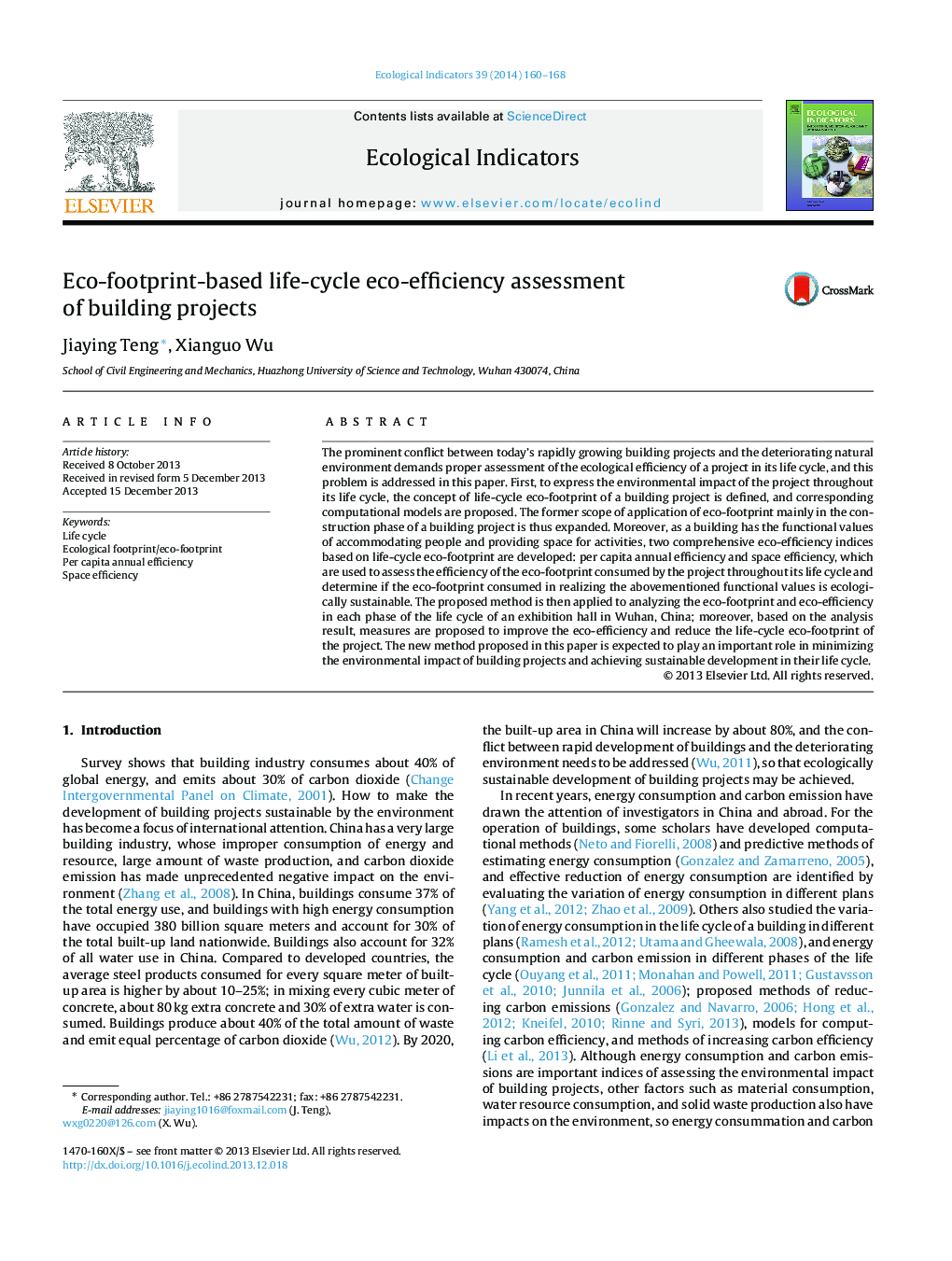| Article ID | Journal | Published Year | Pages | File Type |
|---|---|---|---|---|
| 6295428 | Ecological Indicators | 2014 | 9 Pages |
Abstract
The prominent conflict between today's rapidly growing building projects and the deteriorating natural environment demands proper assessment of the ecological efficiency of a project in its life cycle, and this problem is addressed in this paper. First, to express the environmental impact of the project throughout its life cycle, the concept of life-cycle eco-footprint of a building project is defined, and corresponding computational models are proposed. The former scope of application of eco-footprint mainly in the construction phase of a building project is thus expanded. Moreover, as a building has the functional values of accommodating people and providing space for activities, two comprehensive eco-efficiency indices based on life-cycle eco-footprint are developed: per capita annual efficiency and space efficiency, which are used to assess the efficiency of the eco-footprint consumed by the project throughout its life cycle and determine if the eco-footprint consumed in realizing the abovementioned functional values is ecologically sustainable. The proposed method is then applied to analyzing the eco-footprint and eco-efficiency in each phase of the life cycle of an exhibition hall in Wuhan, China; moreover, based on the analysis result, measures are proposed to improve the eco-efficiency and reduce the life-cycle eco-footprint of the project. The new method proposed in this paper is expected to play an important role in minimizing the environmental impact of building projects and achieving sustainable development in their life cycle.
Keywords
Related Topics
Life Sciences
Agricultural and Biological Sciences
Ecology, Evolution, Behavior and Systematics
Authors
Jiaying Teng, Xianguo Wu,
